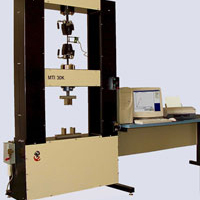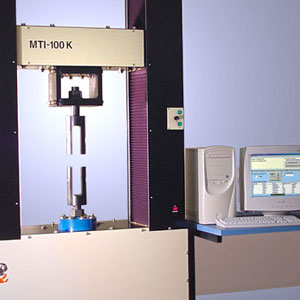Shop Best Bending Test Fixtures Online| MTI
Bending test fixtures are used to transform the ELF and Instron fatigue testers' axial or rotary motions into various types of bending motions or motions that mix bending and other actions. Measurements Technology, Inc. has created a variety of bending test fixtures for this purpose, all of which are based on the primary purpose of the test. These fixtures are made to hold a statistically significant number of specimens and are frequently adjusted to fulfill the test requirements for the customer's device design. To produce physiologically appropriate environmental conditions, all of these test setups can be used with PBS baths or fluid flow. The following list of bending test fixtures includes descriptions of the types of bending tests performed.
Pure bending test fixtures
Pure bending test fixtures apply a bending moment to
the device's proximal and distal ends, resulting in a pure bending
configuration at the device's center.
Cantilevered bending test fixtures
With cantilevered bend test fixtures the proximal end
of the specimen is fixed while the distal end is subjected to an orthogonal
displacement. As a result, the device's part near the fixed end bends.
Combined cantilevered/pure bend test fixture
The proximal end of the specimen is fixed while the
distal end is moved through an arc with a fixed radius in the combined
cantilevered/pure bending test fixture. Because it mimics the wagging of a
tail, this test is commonly referred to as the "wag" test. The
specimen can either "find" its own radius of curvature or be wrapped
around a mandrel of known radius.
Constant radius bending test fixtures
Constant radius bending fixtures with a constant radius
is designed to apply a bending moment at a specific radius. "Bending on a
Mandrel" is a term used to describe this type of testing. The proximal end
of the specimen is fixed with this method, while the distal end of the specimen
is moved in an arc. The specimen is bent over a predetermined radius mandrel to
ensure that the bend has a constant radius. This test can be used to generate
predictable positive and compressive stresses.
Compression bending test fixtures
Compression bending test fixtures apply axial motions
to the distal and proximal ends of an omega (or "inch-worm")
preformed device. The radius of the specimen bend decreases as the ends are
brought together. In contrast to pure bending, which produces only one bend
radius, the compression bend fixture produces three bend radii (distal, center,
proximal).
Shear induced bending test fixtures
Shear induced bending test fixtures apply a shear
motion to one or both ends of the specimen, causing the device to bend and
shear. Based on the applied motions, the specimen is usually permitted to
discover its own radius of curvature.
Contact us with your bending test fixtures requirements
and we will provide an estimate for creating the applied bending you are looking
for.




Comments
Post a Comment